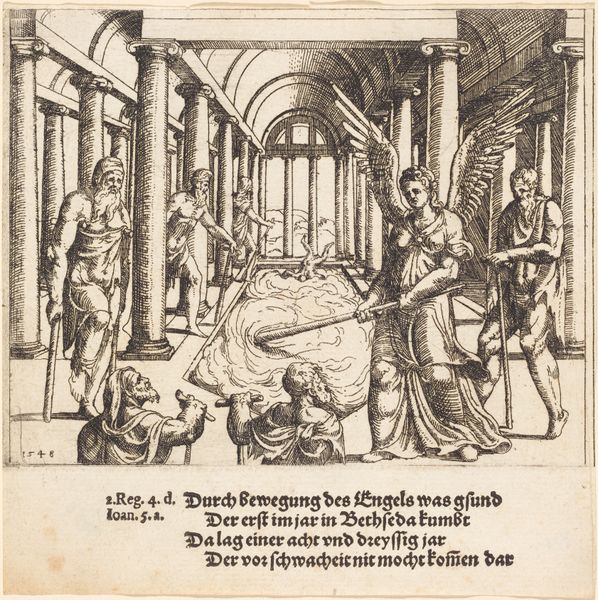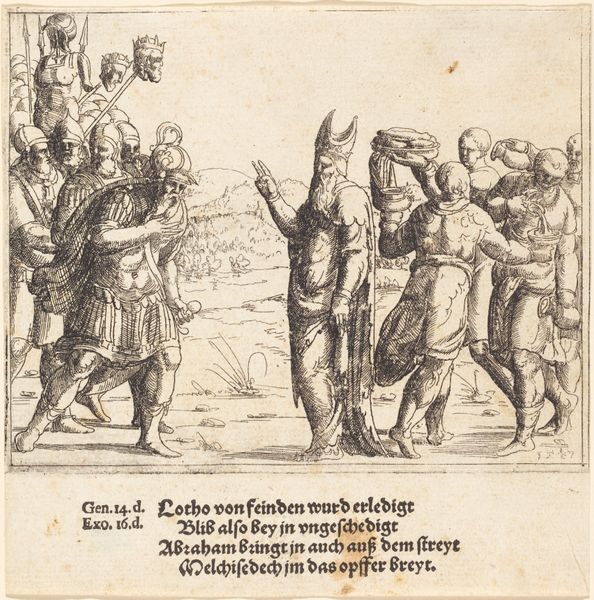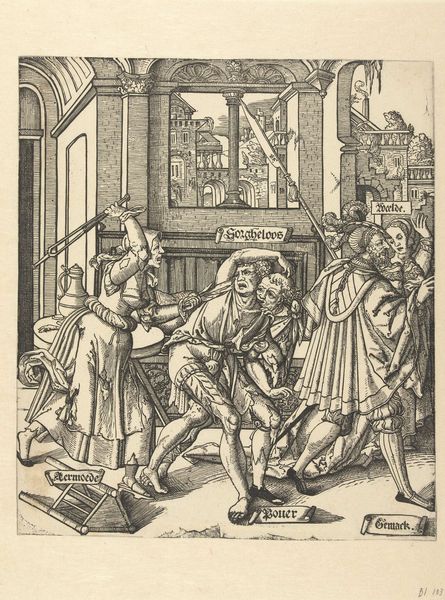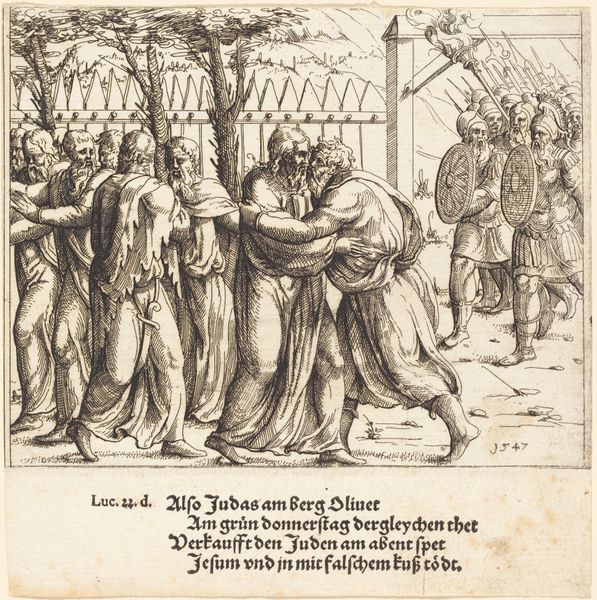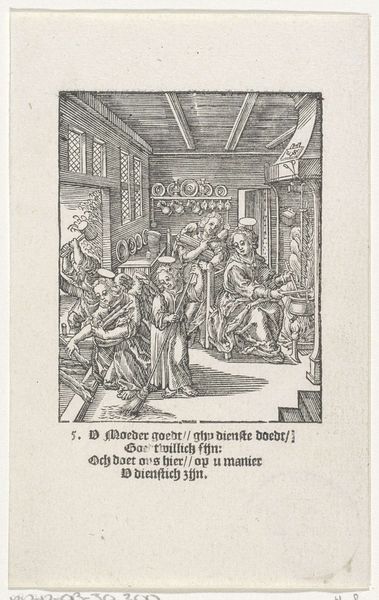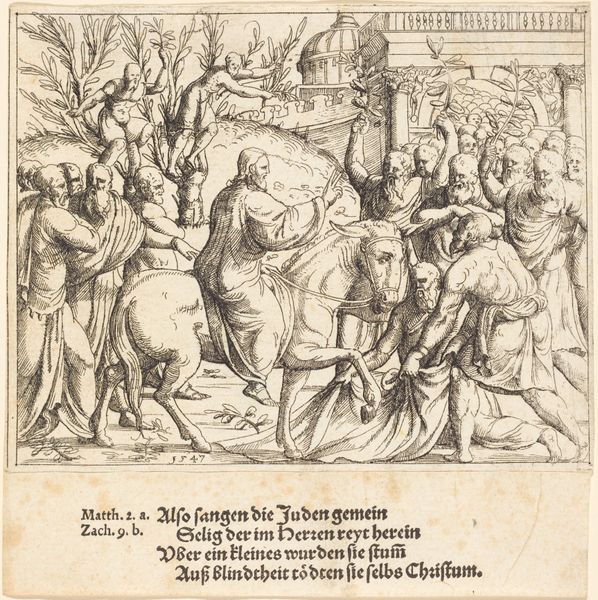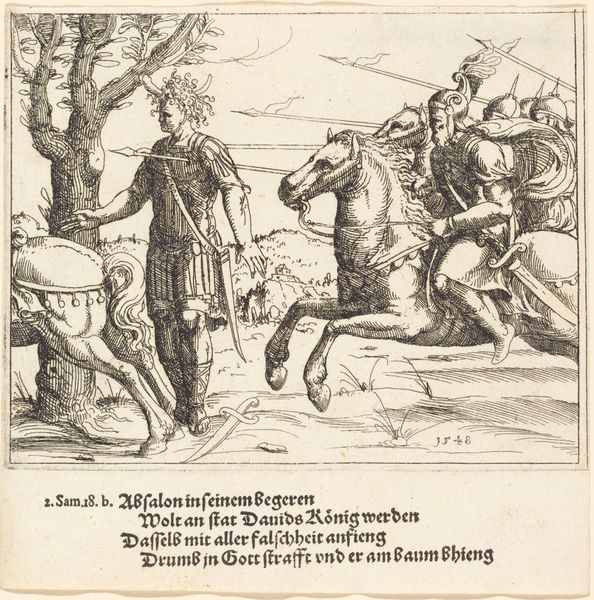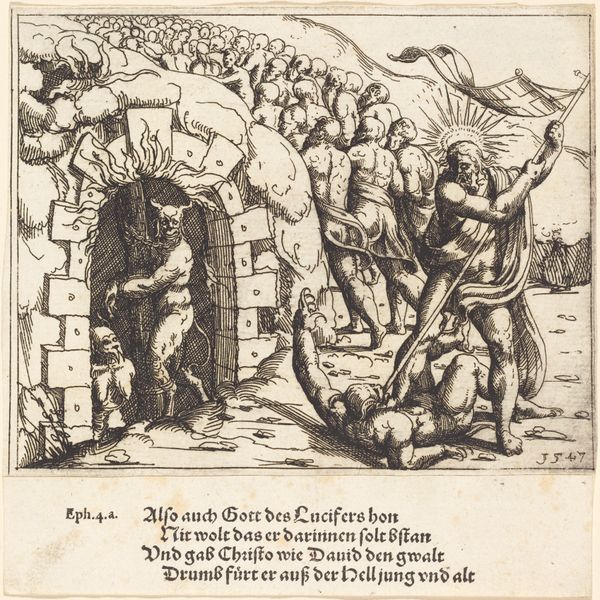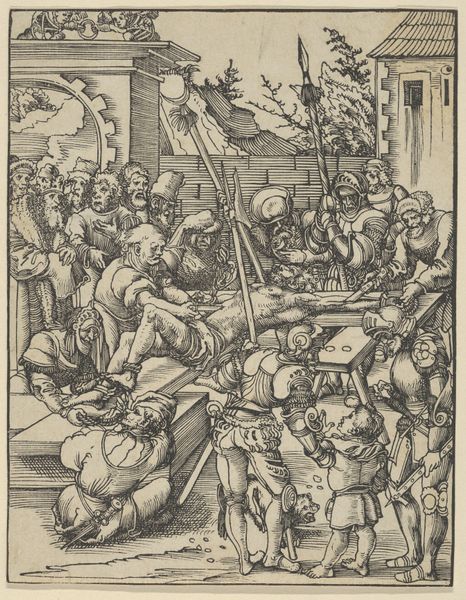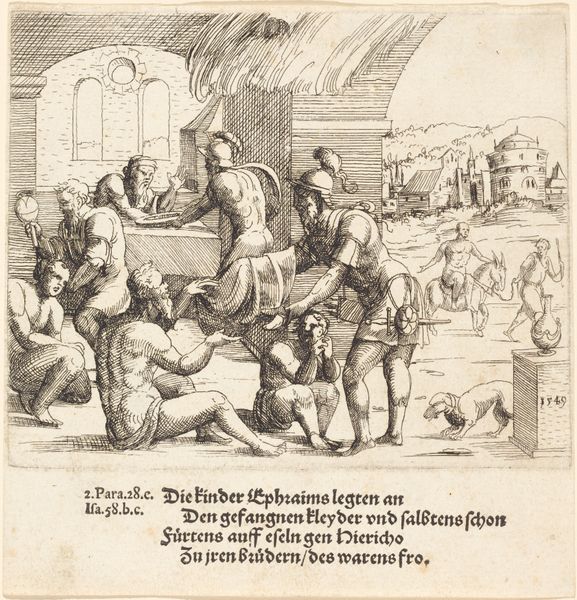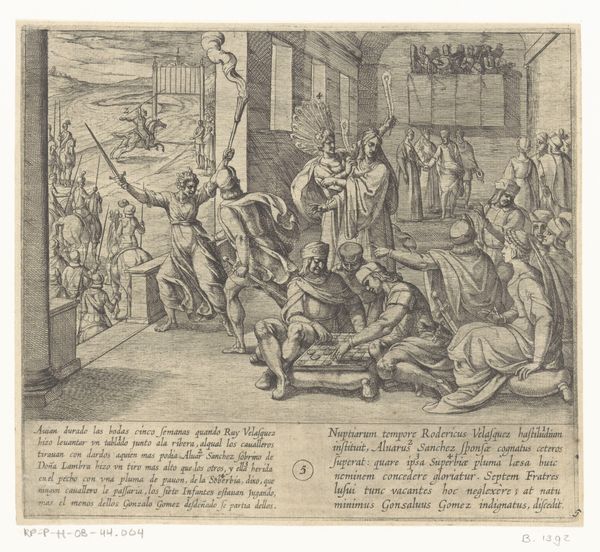
print, engraving
#
narrative-art
# print
#
figuration
#
11_renaissance
#
history-painting
#
northern-renaissance
#
engraving
Copyright: National Gallery of Art: CC0 1.0
Editor: Here we have Augustin Hirschvogel's engraving, "The Adoration of the Magi," created in 1548. I find it quite fascinating, almost like a stage setting, with all the figures arranged so deliberately. What stands out to you in this piece? Curator: I'm drawn to the political undertones. The Adoration wasn’t merely a religious scene; it was a visual assertion of power, an idealization of benevolent rule. Hirschvogel presents an image rooted in its time; a call for social justice subtly encoded within the religious narrative. The magi, often depicted as kings, represent a powerful allegiance and the wealth of nations bowing before the Christ child. Does that reading shift your initial feeling of the theatrical? Editor: Definitely. Knowing it was a claim to power makes me reconsider their positions in the frame; it’s almost as though they are each enacting their role, a responsibility more than reverence. It seems the artist uses very similar cross hatching. Is it relevant? Curator: Exactly! The deliberate mark-making within this work is a critical element in Northern Renaissance engravings. Each careful line and meticulously placed cross-hatching adds texture and depth to the scene but also, the cross-hatching almost becomes the unifying material of this work; each form becomes less like itself and more the result of labour. What can labour signify here? Editor: Thinking about that period, I suppose it mirrors the everyday hardships, contrasting with the promised rewards. I wouldn't have initially considered it from this point of view, seeing more a beautiful story told. Curator: Precisely. The Adoration, like other devotional images, encouraged active seeing—linking the viewer to the depicted world through shared socio-economic experiences and aspiration, through careful making, revealing its cultural values. Editor: I understand so much better the intention behind it. I will always wonder about social agency of images from now on. Curator: Excellent. I have discovered nuances in your perception that also resonate with my perspective on the artist's place in that period.
Comments
No comments
Be the first to comment and join the conversation on the ultimate creative platform.

